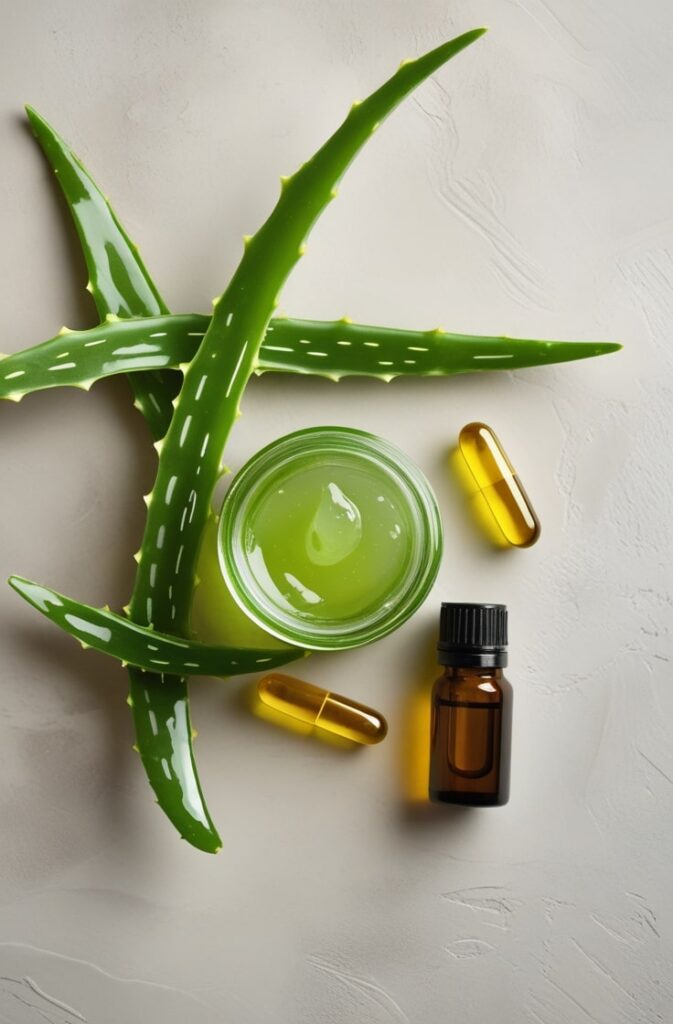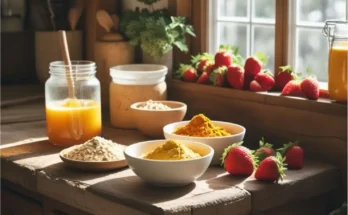Aloe vera gel has long been celebrated for its soothing, hydrating, and healing properties—whether you’re looking to calm sunburn, improve your skin’s texture, or simply enjoy a natural moisturizer. While commercial products can be expensive or packed with additives, making your own aloe vera gel at home is both affordable and rewarding. Here’s a guide featuring three simple recipes that harness the pure, natural power of aloe vera.
Table of Contents
Why Homemade Aloe Vera Gel?
Homemade aloe vera gel offers several benefits:
- Purity: You control the ingredients, ensuring no unwanted additives.
- Cost-Effective: Fresh aloe leaves from your garden or a local store can yield plenty of gel.
- Customizable: Add ingredients to boost benefits—whether you need extra hydration, antioxidant protection, or a cooling effect.
Before diving into the recipes, a quick tip: Always use fresh, healthy aloe leaves. If you’re harvesting from your own plant, choose mature leaves from the outer section, wash them thoroughly, and allow them to drain before processing.
Recipe 1: Basic Aloe Vera Gel
What You’ll Need:
- 2 large fresh aloe vera leaves
- 1/4 cup distilled water (optional, for a lighter consistency)
Instructions:
- Harvest and Prepare:
- Wash the aloe leaves and trim off the prickly edges.
- Place the leaves upright in a container for about 10–15 minutes to drain out the yellow sap (aloin), which can be irritating.
- Extract the Gel:
- Slice the leaves lengthwise and gently scoop out the clear gel using a spoon.
- Blend:
- Add the gel to a blender. For a smoother, more spreadable consistency, add 1/4 cup of distilled water.
- Blend until you achieve a smooth, uniform consistency.
- Store:
- Pour the gel into an airtight container and refrigerate. Use within 1–2 weeks.
Benefits:
This basic recipe creates a pure, multipurpose gel perfect for moisturizing, soothing irritated skin, or applying as a light makeup primer.

Recipe 2: Aloe Vera Gel with Vitamin E
What You’ll Need:
- 2 large fresh aloe vera leaves
- 1/4 cup distilled water (optional)
- 1–2 vitamin E oil capsules (or 1 teaspoon liquid vitamin E)
Instructions:
- Prepare the Gel:
- Follow the same steps as Recipe 1 to extract and blend the aloe vera gel with water.
- Add Vitamin E:
- Open the vitamin E capsules and add the oil into the blender.
- Blend again briefly to combine.
- Store:
- Transfer the mixture into a sterilized container.
- Refrigerate and use within 1–2 weeks.
Benefits:
Vitamin E enhances the gel’s regenerative properties, helping to reduce the appearance of scars and wrinkles, and adding extra antioxidant protection.

Recipe 3: Aloe Vera, Cucumber, and Honey Gel
What You’ll Need:
- 2 large fresh aloe vera leaves
- 1/2 small cucumber (peeled and chopped)
- 1 tablespoon raw honey
- 1/4 cup distilled water (optional)
Instructions:
- Extract Aloe Gel:
- Follow Recipe 1 to prepare your fresh aloe vera gel.
- Prepare Cucumber:
- Peel and chop the cucumber into small pieces.
- Blend Ingredients:
- In a blender, combine the aloe vera gel, chopped cucumber, and raw honey.
- Add distilled water if you prefer a lighter, more fluid texture.
- Blend until smooth.
- Store:
- Transfer the gel into an airtight jar and refrigerate. Use within 1 week.
Benefits:
Cucumber adds a cooling, hydrating effect, while honey offers natural antibacterial properties. This combination is especially soothing for inflamed or sun-exposed skin.

Tips for Best Results
- Patch Test: Always do a small patch test on your skin before using homemade products to ensure no adverse reactions.
- Preservation: Since these recipes are free of synthetic preservatives, keep your gel refrigerated and use it within the recommended timeframe.
- Consistency: For best results, incorporate your aloe vera gel into your daily skincare routine—whether as a moisturizer, a soothing mask, or a spot treatment.
Final Thoughts
Making your own aloe vera gel is a practical and natural way to boost your skincare routine. With these three recipes, you can choose a formulation that suits your skin’s unique needs—from pure hydration to antioxidant protection and soothing coolness. Give these a try and experience the benefits of nature’s healing touch in the comfort of your home.
For more skincare tips and DIY beauty solutions, be sure to check out my other posts and share your experiences—let’s connect and inspire each other on the journey to healthier, happier skin!
Frequently Asked Questions
Can I use store-bought aloe vera gel instead of fresh aloe leaves?
While store-bought aloe vera gel is convenient, it may contain preservatives and additives. For the purest benefits and full control over ingredients, fresh aloe leaves are recommended.
How do I choose the best aloe vera leaves for making gel?
Select mature, thick leaves from the outer sections of the plant. These leaves typically contain more gel and have a higher concentration of beneficial compounds.
How long can I store homemade aloe vera gel?
When refrigerated in an airtight container, homemade aloe vera gel can last between 1 to 2 weeks. For longer storage, consider freezing small portions in ice cube trays.
Can I customize my aloe vera gel with additional ingredients?
Absolutely! Depending on your skin’s needs, you can add ingredients like vitamin E oil for extra antioxidant benefits, or blend in cucumber or honey (as detailed in Recipe 2 and Recipe 3) for additional soothing and hydrating effects.
Do I need to refrigerate my homemade aloe vera gel?
Yes. Refrigeration helps preserve the gel’s freshness and prevents microbial growth, as these natural recipes don’t include synthetic preservatives.
Is homemade aloe vera gel safe for all skin types?
Generally, yes. However, if you have very sensitive or allergy-prone skin, it’s wise to perform a patch test first. Also, if you’re using ingredients like lemon juice in other recipes, be cautious as they can cause irritation.
What should I do if my aloe vera gel changes color or develops an off smell?
If the gel turns noticeably darker or acquires a sour smell, it may have spoiled. In that case, it’s best to discard the batch and prepare a fresh one to ensure your skin receives only safe, effective care.




One Comment on “How to Make Aloe Vera Gel at Home: 3 Simple Recipes”